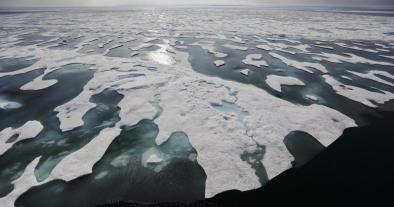Science Source
Arctic Resilience Report 2016
If multiple regime shifts reinforce each other, the results could be potentially catastrophic. The variety of effects that we could see means that Arctic people and policies must prepare for surprise. We also expect that some of those changes will destabilise the regional and global climate, with potentially major impacts.
Johan Rockström, from the Stockholm Resilience Centre, co-chair of the project
- Identifies 19 Arctic tipping points (which it calls regime shifts) that can and have occurred in the region’s ecosystems, including: vegetation growth on tundra, replacing snow and ice and helping to absorb more of the sun’s heat; higher methane releases; the disruption of the Asian monsoon by changing Arctic snow distribution warming the ocean; and collapses of some Arctic fisheries, with global ocean ecosystem consequences
- Finds that not only are regime shifts occurring, but there is a real risk that one regime shift could trigger others, or simultaneous regime shifts could have unexpected effects
Related Content
Science Source
| World Weather Attribution
Unusually high temperatures at the North Pole, winter 2016
Science Source
| Geophysical Research Letters
Accelerated increase in the Arctic tropospheric warming events surpassing stratospheric warming events during winter
S.‐Y. Simon Wang, Yen‐Heng Lin, Ming‐Ying Lee et al
Science Source
| Bulletin of the American Meteorological Society
EEE 2016: CMIP5 Model-based Assessment of Anthropogenic Influence on Highly Anomalous Arctic Warmth During November–December 2016
Jonghun Kam, Thomas R. Knutson, Fanrong Zeng et al
Headline

Dec 12, 2017 | Mother Jones
The Arctic is warming faster than at any point in the past 1,500 years


